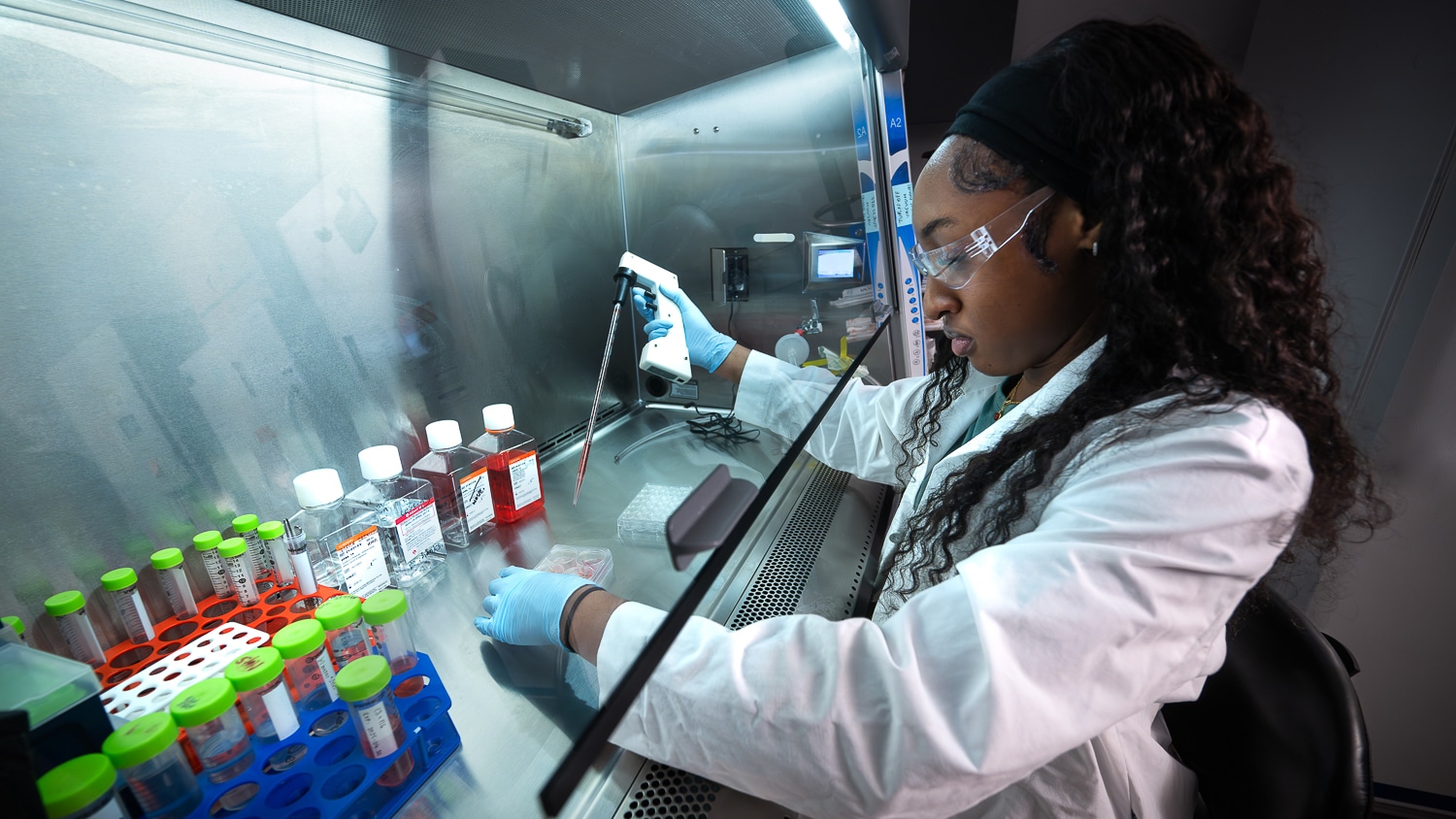CSI: College of Textiles

Written by Cameron Walker
One can gather an extraordinary amount of information from a few drops of blood at a crime scene. Investigators can tell the height from which blood fell, directionality of blow or bullet, the instrument used and the genetic identity of the victim or perpetrator. However, when blood stains a textile as opposed to landing on a hard surface, the evidence is more difficult to interpret.
“When the blood hits a nonporous surface, it may spread out and then retract, but it stays there,” said Dr. Stephen Michielsen, professor and director of Ph.D. programs in the Department of Textile Engineering, Chemistry and Science in the Wilson College of Textiles. “On a wicking surface, it hits and it’s exactly the same process for…about 1/100th of a second. Thereafter, it begins to wick and spread in the textile. At that point, the behavior is completely different than what we see on other surfaces.”
Basically, in addition to the bloodstain altering the textile, the textile alters the bloodstain. Factors such as the way the yarn is spun, the warp of the woven fabric and mechanical and chemical treatments affect the way the blood lays on or settles into the textile. The great variety of textiles and a lack of understanding of their manufacturing and finishing processes has led to a knowledge gap in the field.
Michielsen is one of few experts in the specialized field of textile forensics, and he recently conducted a workshop for city, county and state crime scene professionals from across the country and Canada to further their understanding of the interaction of blood and textiles.

The workshop ran October 11-13, and was presented by the Forensic Technology Center of Excellence (FTCoE), a program led by independent nonprofit institute RTI International, supported through a cooperative agreement from the National Institute of Justice, Office of Justice Programs and the U.S. Department of Justice with assistance from the Zeis Textiles Extension. The FTCoE’s mission is “improving the practice and strengthening the impact of forensic science through rigorous technology corroboration, evaluation and adoption; effective knowledge transfer and education; and comprehensive dissemination of best practices and guidelines to agencies dedicated to combating crime.”
“To solve a case, you really have to think of all the possibilities. So I told them to think broadly, but testify conservatively.”
The workshop taught attendees to identify major fabric types, understand how the fabric structure alters bloodstains, identify environmental factors that affect stain formation and more, through hands-on activities like an exploration of drip and splatter stains.
“This workshop (was meant to) aid investigators in how they analyze blood patterns on cloth substrates, which in turn will help solve crimes,” said Donia Slack, associate director of FTCoE at RTI international. “Research that Dr. Michielsen has performed has the potential to impact the criminal justice system, and workshops such as these are important for the application of novel scientific research.”
The most important thing Michielsen wanted attendees to understand is that interpreting bloodstains on textiles is difficult at best.
“The (crime scene experts) have been taught cotton does this, polyester does that, cotton is natural, polyester is synthetic, and they behave completely differently,” said Michielsen. “I showed them that cotton can behave in lots of different ways and polyester can behave in lots of different ways and that they can’t make any blanket statements. Many of them wanted a catalog of bloodstains on textiles, but I taught them that such a catalog would require approximately a fleet of container ships just to hold it.”

Instead of trying to learn from a textbook, attendees experimented with staining textiles themselves, learning firsthand the complexities involved in extracting knowledge from drops of blood on fibers and cloth.
“There is a lot of useful information there, but part of it is understanding what a textile can do so we know the limitations of our interpretations,” said Michielsen. “To solve a case, you really have to think of all the possibilities. So I told them to think broadly, but testify conservatively.”
Michielsen has been actively involved in forensic textile research since 2012. He was working on a project for the military to “prevent certain unpleasant chemicals from passing through a textile” when Wilson College of Textiles dean Dr. David Hinks, director of the forensics program at the time, suggested he investigate bloodstains on textiles. According to Michielsen, Hinks helped him assemble a team and “the rest is history.”
He has several graduate students pursuing exciting research in the field, including the transfer of bloodstains from fabric to fabric and the wetting behavior of single fibers; he is also advising a student in their work to develop an artificial blood specifically for textile forensic research.

- Categories:


